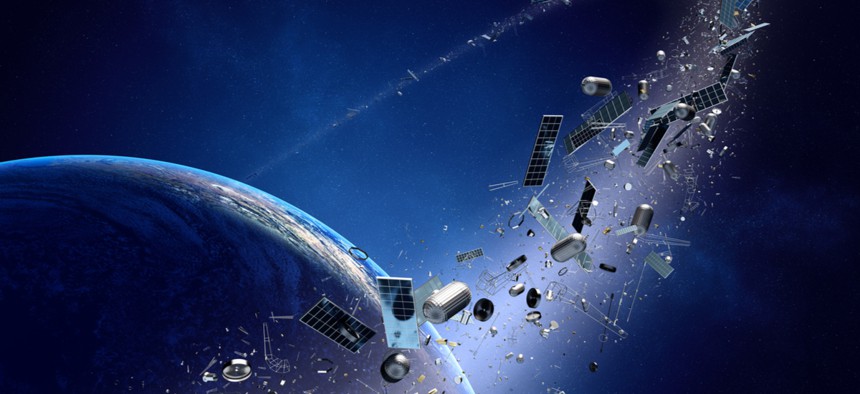Watch a Space Robot Capture a Runaway Satellite With its Net

Johan Swanepoel/Shutterstock.com
Space debris like an errant satellite can pose a risk to other things in orbit.
What to do about a drifting satellite?
When their missions are done, satellites are supposed to trash themselves—either burning up in the atmosphere, or flying into a parking orbit out of everyone else’s way. But older or malfunctioning satellites aren’t always able to take care of themselves. These can become dangerous obstacles to everything else in orbit, from other satellites to the International Space Station, as can other debris left in orbit by butter fingers.
An experiment designed by the University of Surrey demonstrates one potential clean-up tactic: Use a net to ensnare the errant satellite; its extra weight and broader aerodynamic profile will pull the old satellite down into the atmosphere for incineration. This video shows the net in action:
The experiment, known as Remove Debris, used a one-meter cube satellite built by Surrey Satellite Technology Ltd. and launched by SpaceX to the International Space Station earlier this year. The largest satellite ever deployed from the orbital lab, Remove Debris contained the target satellite seen above, as well as another small satellite it will use to test range-finding sensors. Later, it will also shoot a tethered harpoon at a target that it extends from its body to test a different method of disposal.
These experiments will gave space engineers data about how to construct and deploy an orbital trash collector to deal with the growing problem. Space debris in low-earth orbit increases each year, and plans to launch huge new constellations mean it is only going to get more crowded.
Mission complete, the satellite will ultimately deploy a drag sail to pull itself back down into the atmosphere, where it too will be burnt up and destroyed.






